Costa Rica: A Coffee Nation
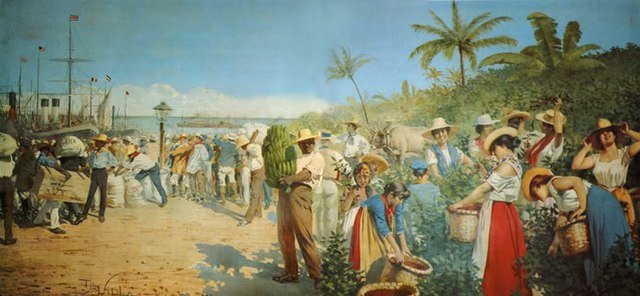
☕A COFFEE NATION
The coffee crop has played a major role in the history of Costa Rica, and continues to do so even today. It is safe to say that the country would not exist in the shape it does today were it not for the early coffee plantations. The profits and development that sprouted around the coffee industry have built roads, railroads, ports, towns and cities, in addition to empowering local farmers, their families, and merchants while elevating the economy and well-being of a new and growing nation. Even today, coffee is a major agricultural export, employs 85,000 Costa Rican & migrants in all stages of production, and is a source of pride (and great PR) for the little country.

…But all is Not Well…
But there is a darker side to the story – and I am not talking about the color of the roast. Issues around deforestation and organized crime cast a shadow over the industry while labor shortages, production costs, climate variations and the strength of the local currency against the US Dollar bring persistent headwinds. Costa Rica is producing half the coffee output that it produced in the early 1990s.
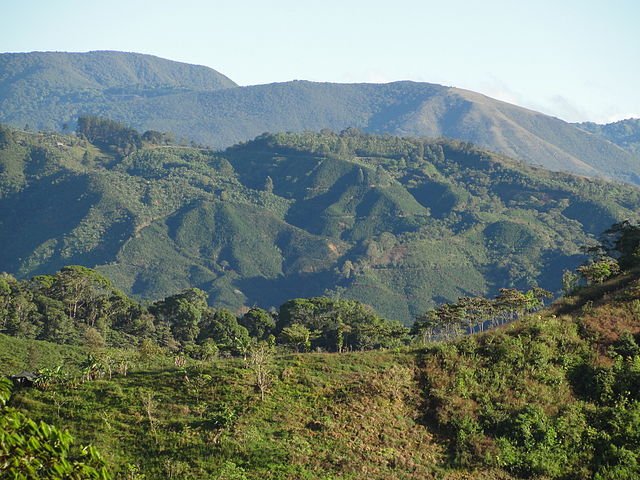
But, as we will see, the Costa Rican coffee industry has weathered ups and down for hundreds of years so the issues listed above are, proverbially, ‘nothing new under the sun’. Grab a hot cup of your favorite blend as we take a look at this fascinating industry and its role in shaping Costa Rica.
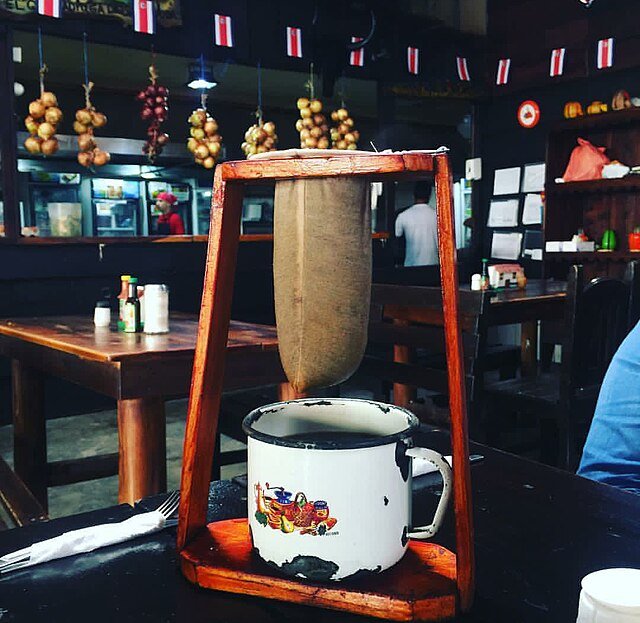
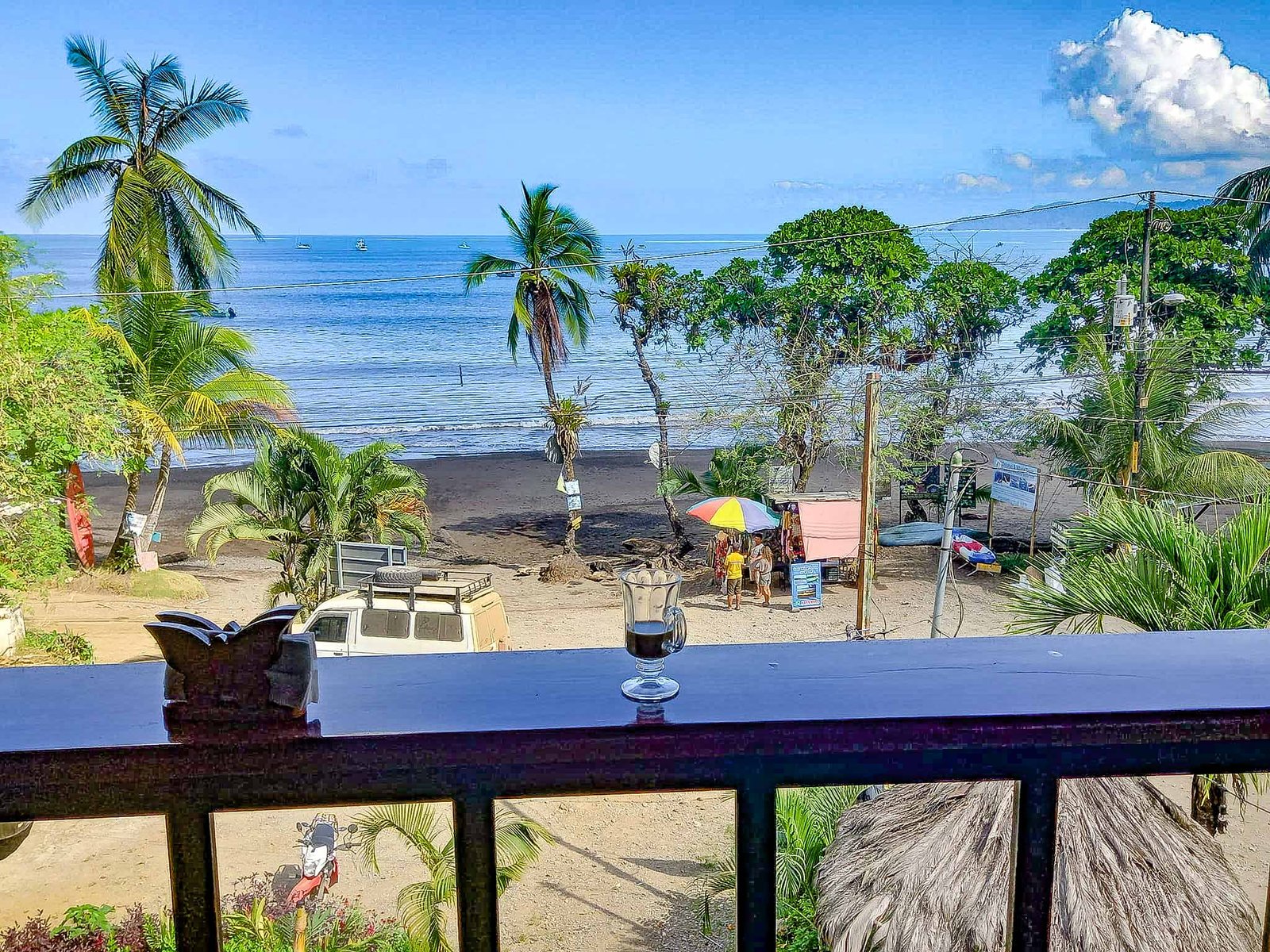
🌱 THE BEGINNING
The history of Costa Rica is invariably tied to coffee. Starting in 1779 the crop was planted along the hills and valleys of the country, the climate along the volcanic highlands being PERFECT for the coffee plants which were introduced here directly from Ethiopia. The government gave out plots of land to encourage coffee production. Starting in the 1800s, coffee crops became very important to the economy of the nation surpassing cocoa, tobacco and sugar crops in the 1830s. Coffee wealth transformed and modernized the country, giving the populace the income needed to ensure a high standard of living and ability to provide their children with proper education, often abroad in Europe.
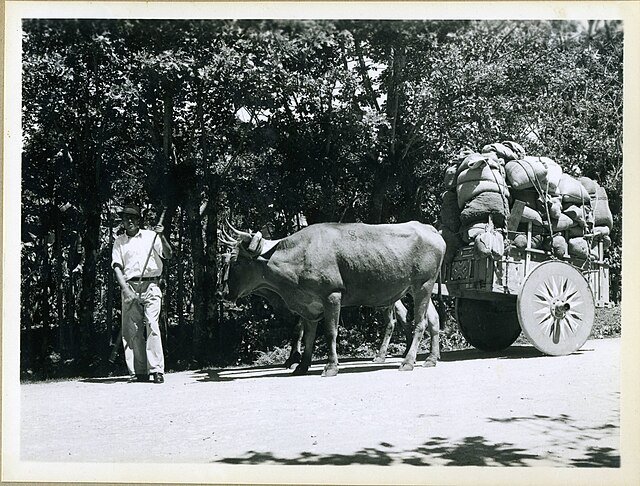
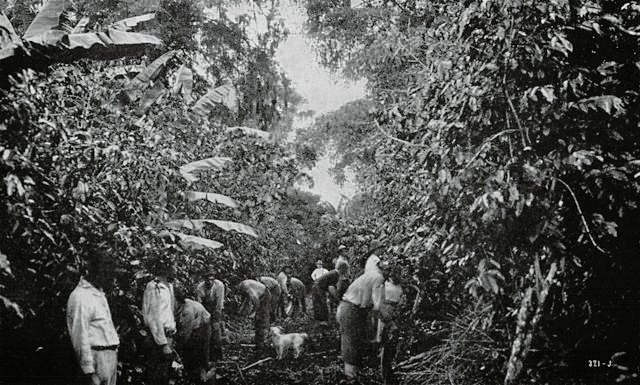
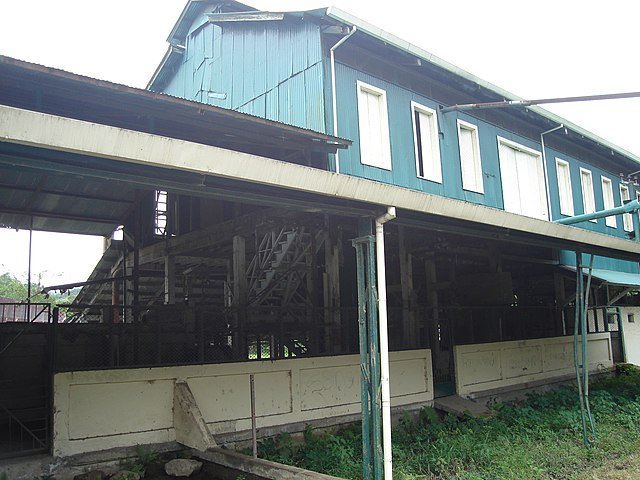
A Major Cash Crop
Even today, coffee is a major cash crop, resulting in almost $400 million of economic activity every year and about 2% of Costa Rica’s total exports value. The industry goes through boom and bust cycles with annual production showing great variation from year to year. Currently, about 85,000 workers are employed in the sector – this includes work in the plantation, processing, packaging, transport and other related areas of the coffee industry.
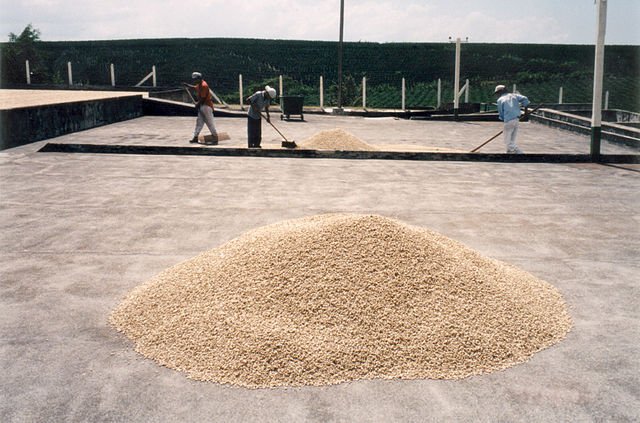
🗺️ COFFEE REGIONS
For such a small country, Costa Rica has a very rich variety of coffee growing regions. No fewer than eight major areas have been officially recognized. The main cluster is centered around the city of San Jose – and no wonder as the surroundings are home to several volcanoes and towering mountains of the Cordillera Central – PERFECT coffee habitat. Six of the eight coffee regions can be found in this small central grouping.
The two remining regions stretch over the top and bottom extremes of the nation. The Guanacaste region covers the northern mountains and high plateaus where a much dryer seasonal climate prevails – in contrast to the elevated areas of southern Brunca region where heavy rains falls pretty much year-round.
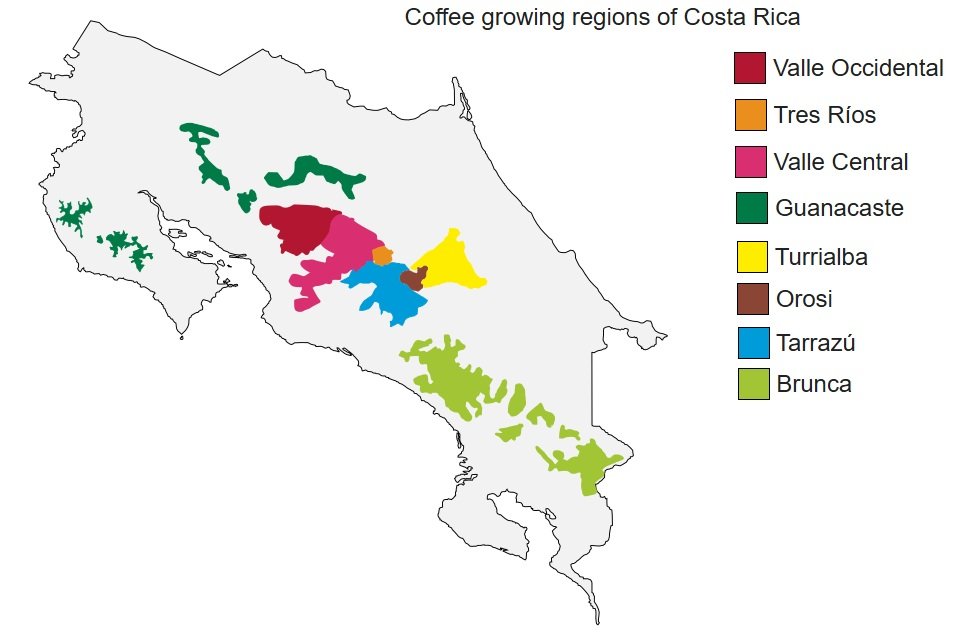
High-Altitude Endevour
The best coffee is grown at between 1200 to 1700 meters – and all of Costa Rica’s eight coffee regions fall wholly or partly in this range. The Tarrazú region tops out at a very high 1900 meters while Guanacaste, Brunca, Valle Occidental and Turrialba reach down to 700 meters or lower. Because of the variance in altitudes and climates, Costa Rican coffee is very diverse in strength, aroma, body and flavors.
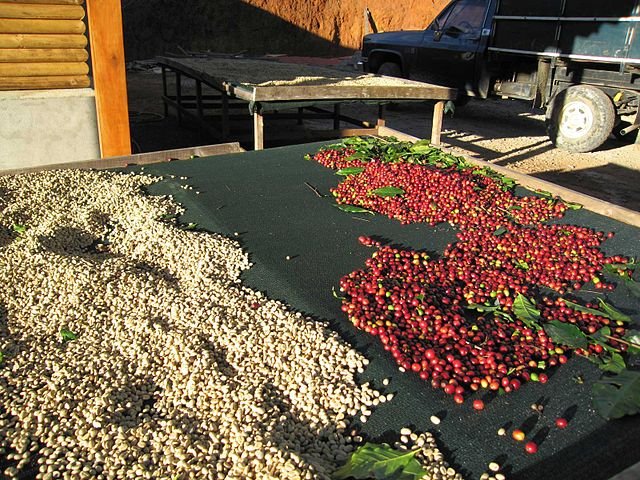
Tarrazú region produces the best coffee in Costa Rica, and many agree that it is also the best coffee in the world. The Geisha Coffee production started in 2012 in the area of Tarrazú and the local Geisha beans made the most expensive coffee sold by Starbucks in 48 of their stores in the United States.
🐎 THE OXCART
The brilliantly colorful and beautiful Costa Rican Oxcart, or Carreta, rose from its humble beginnings in the early 1800s to become one of the most striking and recognizable symbols of the country. In 2005 it was granted the coveted ‘Intangible Cultural Heritage‘ status by UNESCO. And it was coffee which drove the development of the Oxcart.

Costa Rica’s iconic oxcarts began as simple, European-style wagons used for farm chores and worker transport. But by the mid-1800s, the booming coffee trade demanded more. Coffee had to travel from the Central Valley to ports on the Pacific and Caribbean coasts—a grueling journey that took 10 to 20 days through rugged terrain.
This challenge sparked a design revolution. The traditional spoked wheels couldn’t handle the mud, rocks, and dense vegetation. In response, Costa Ricans developed a solid, spokeless wheel, inspired by Aztec engineering, which resisted bogging and breakage. The carts also became lighter and stronger, with modified frames to better support heavy coffee loads and simplify loading and unloading.
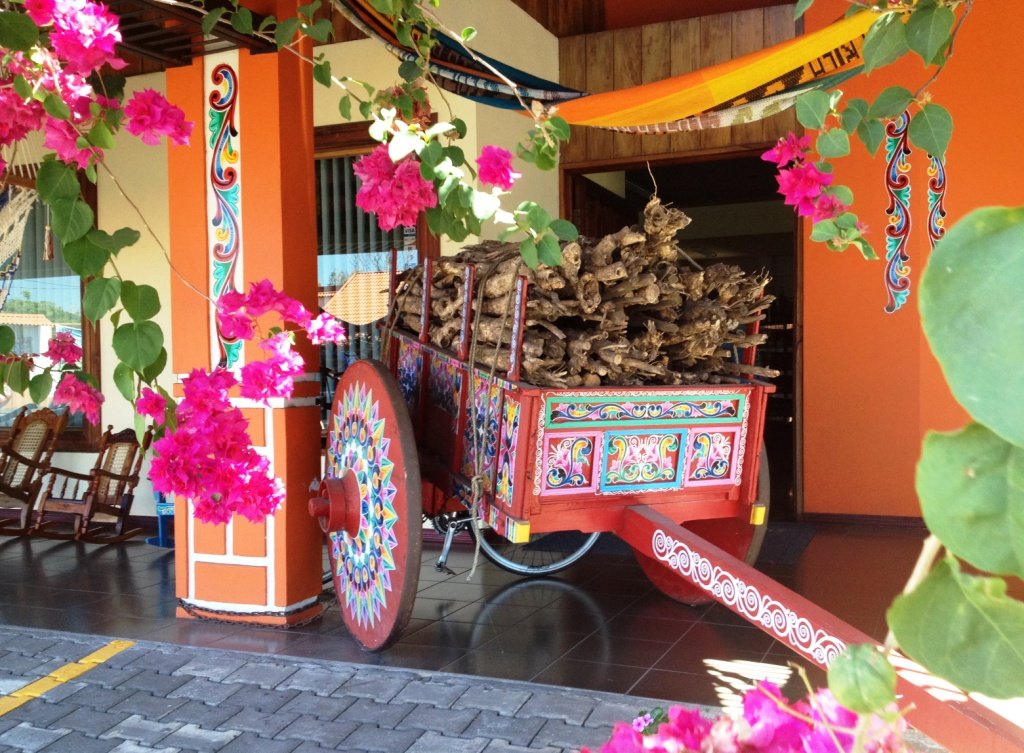
Birth of a National Tradition
The tradition of painting Costa Rica’s oxcarts began in the early 1900s in Sarchí, a town now famous for its craftsmanship. At the heart of this story is Joaquín Chaverri, a local artisan and factory owner who wanted his family to ride in style during Sunday outings. With only orange paint available, he decorated his oxcart in bold, swirling patterns of that single color. As more pigments became accessible, the designs grew more elaborate—but orange remains the signature shade of Costa Rican oxcarts and their ornate bull harnesses.
These carts evolved from practical farm tools into symbols of status and artistry. The more intricate and vibrant the design, the greater the prestige of the owner. Today, no two carts are alike. Each one reflects the painter’s skill, the family’s pride, and the cultural richness of the region.
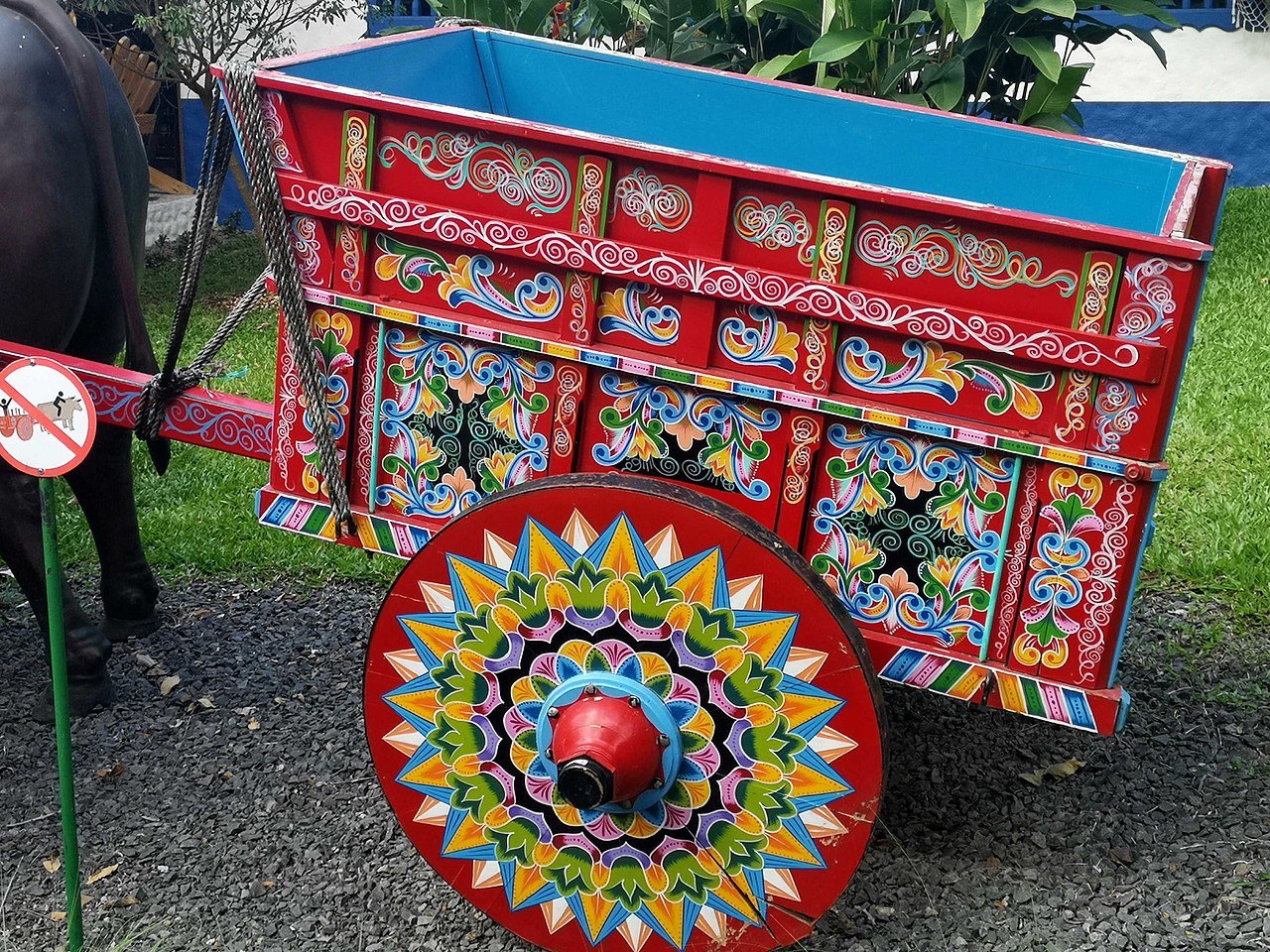
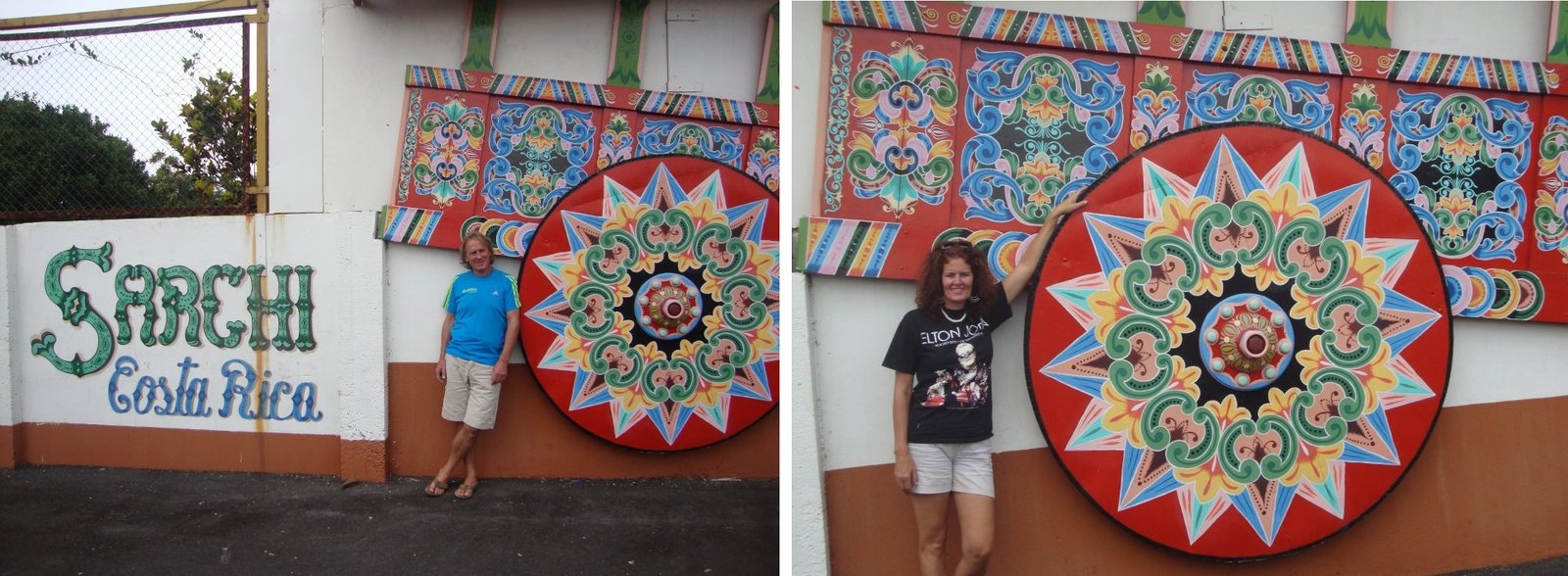
😎 CAMINO DE COSTA RICA
A great way to experience Costa Rica and touch on the country’s coffee heritage is a stroll down the 280km trail called ‘Camino de Costa Rica‘, or ‘Costa Rica Trail’. This trail cuts across the entire country from the Pacific coast near Quepos to the Caribbean coast near Parismena. Along the way hikers experience lowland jungles, montane forests, hills & mountains, volcanoes, indigenous lands and, of course, coffee plantations of the Los Santos coffee region, including the famous Tarrazú.
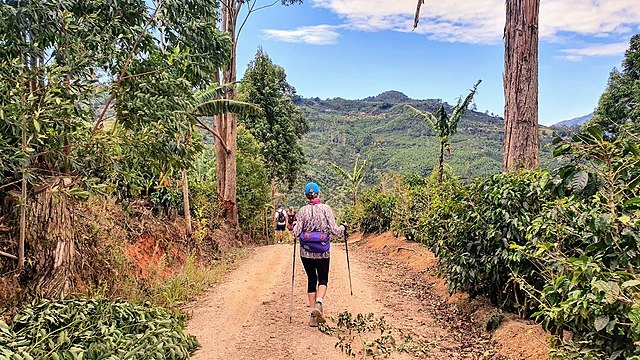
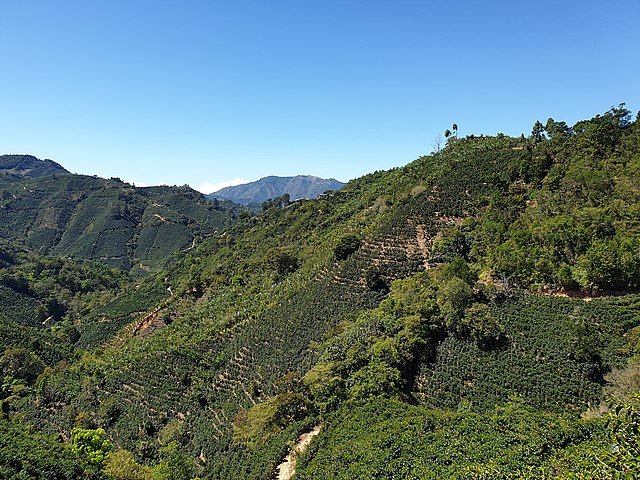
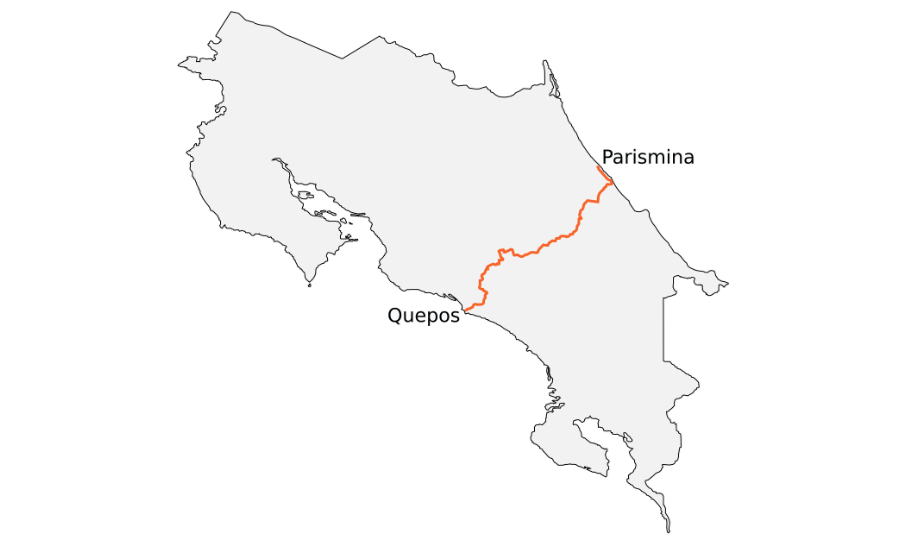
🌍 ENVIRONMENTAL CONCERNS
As with any other primary industry, environmental issues are many and they are very diverse, reaching into every stage of cultivation and production. We will take a look at problems (and solutions) around Deforestation, Plantation Waste, River & Biowaste Pollution, Single-Use Coffee Pods, and Single-Use Coffee Cups.
-
DEFORESTATION
Costa Rica’s coffee story began in 1779 with modest cultivation and minimal environmental impact. Early farmers planted bushes along the fertile slopes of volcanoes like Poás, Tarrazú, Barva, and Irazú, where elevation, mist, and volcanic soil created ideal growing conditions.
But everything changed in the 1830s, when coffee exports surged. The Central Valley, once blanketed in pristine Montane and Cloud Forests, saw rapid deforestation. Farmers cleared vast tracts of native forest to make way for expanding plantations. These ecosystems—rich in biodiversity and fragile by nature—were cut down in the name of economic growth.
The deforestation didn’t stop with the 19th century. Even today, some regions continue to lose forest cover as coffee farms push deeper into vulnerable landscapes. While modern sustainability efforts are gaining ground, the legacy of unchecked expansion still lingers in Costa Rica’s coffee heartland

Café Plus
Costa Rica has launched the Coffee+, Zero Deforestation program—also known as Café Plus—to ensure its coffee sector grows without harming forests. Led by the Costa Rican Coffee Institute (ICAFE) and the Costa Rica–United States Foundation for Development (CRUSA), this initiative sets a new sustainability benchmark for the industry.
The program focuses on three key pillars:
✅ Legal Compliance
- Aligns Costa Rican coffee production with international standards, especially the European Green Deal.
- Ensures farms meet deforestation-free certification requirements through training and monitoring.
💻 Technology & Support
- Provides technical assistance and digital tools to help producers adopt sustainable practices.
- Uses geolocation and data tracking to monitor land use and forest protection.
💰 Incentives for Sustainability
- Introduces a payment-for-results system that rewards farms for regenerative practices.
- Encourages long-term investment in soil health, biodiversity, and carbon reduction.
The program already supports:
- 2,678 coffee producers
- 304 coffee mills
- 93 exporting companies
It also champions gender equity and generational inclusion, ensuring that women and young people participate fully in every phase—from planting to export.
The first batch of the ‘Coffee+, Zero Deforestation‘ was exported to Italy in March of 2024.
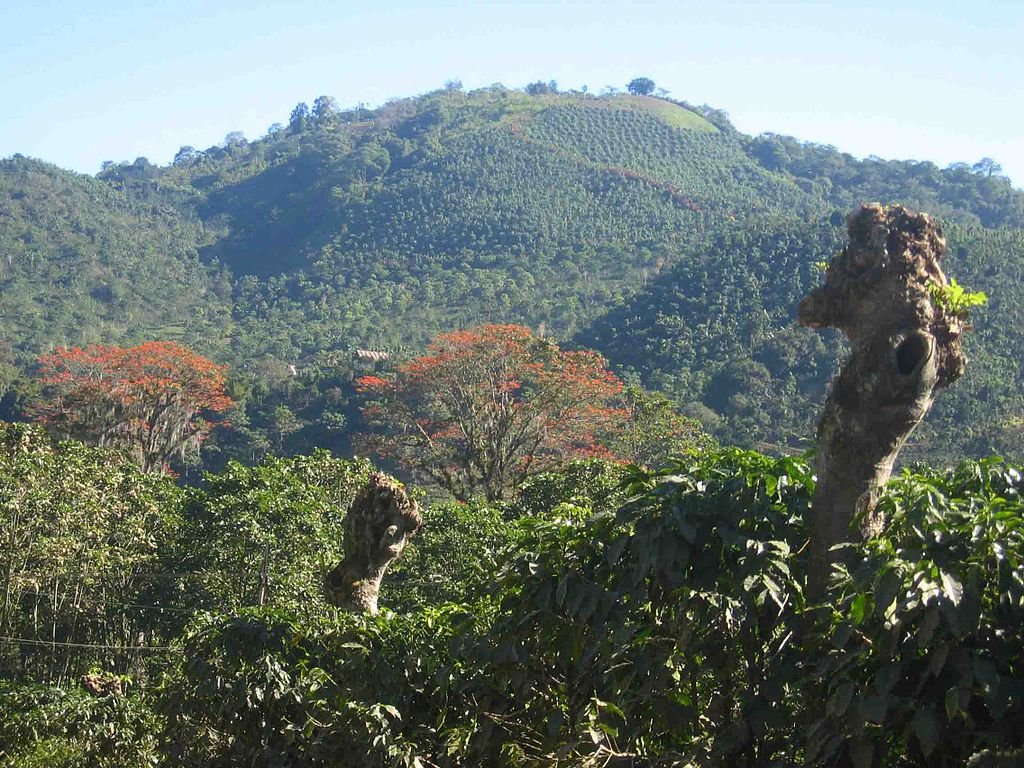
Rainforest Alliance
The Rainforest Alliance plays a vital role in shaping sustainable coffee production across Costa Rica and beyond. Farms that earn its certification must meet strict standards covering soil health, water conservation, wildlife protection, and worker rights. These criteria ensure that coffee is grown in harmony with nature and with respect for the people who cultivate it.
The organization doesn’t stop at the farm gate. It engages with every stage of the coffee lifecycle—from production to consumption to disposal. Certified farms often implement regenerative practices, such as planting native shade trees, protecting biodiversity corridors, and reducing carbon emissions through efficient processing methods.
In Costa Rica, farms like Aquiares Estate showcase what Rainforest Alliance certification can achieve. They’ve planted over 50,000 shade trees, connected wildlife habitats, and invested in education and healthcare for workers. This holistic approach turns coffee farming into a model of environmental stewardship and social responsibility.

-
PLANTATION SANITATION
Coffee plantations often stretch across vast landscapes, making access to sanitation facilities a challenge for workers. In remote or under-resourced areas, this can lead to serious hygiene issues. Human waste may contaminate surface and groundwater, threatening ecosystems and communities downstream.
To address this, the Sustainable Sanitation Alliance (SuSanA) is helping transform sanitation on Costa Rican coffee farms. Their initiative promotes Urine Diversion Dehydration Toilets (UDDTs)—dry toilets that operate without water. These systems prevent pollution at the source and eliminate the need for costly infrastructure.
UDDTs also produce compost from human waste, which farmers can use to enrich soil and support sustainable agriculture. By improving sanitation and recycling nutrients, this approach strengthens both environmental health and coffee farm resilience.
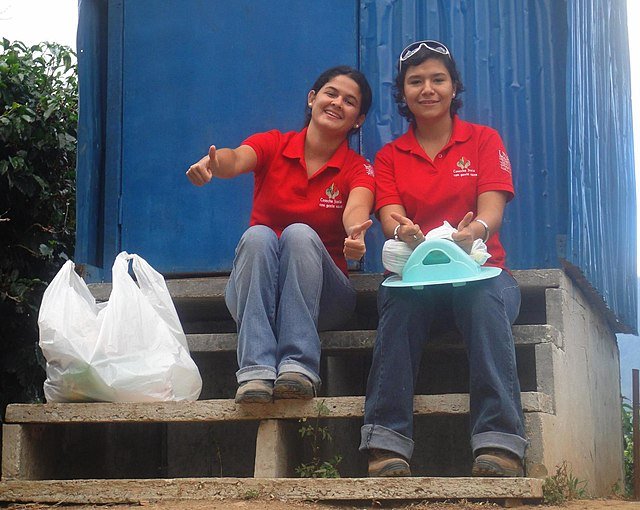
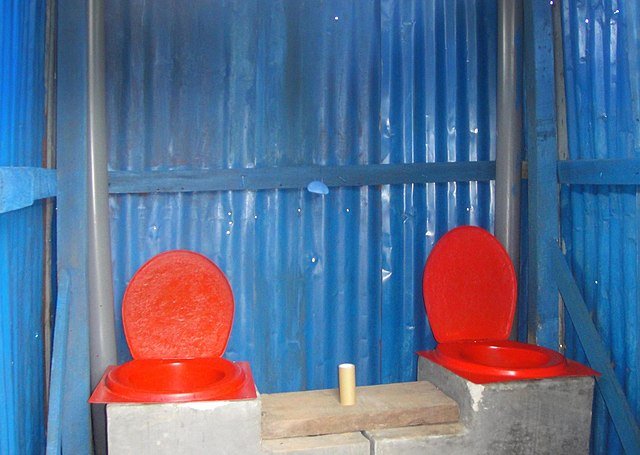
-
PLANTATION BIOWASTE
Coffee production generates far more waste than most people realize. Before processing, about 60% of the coffee bean consists of compounds that are toxic to wildlife and harmful to humans. During wet milling, these chemicals—along with pulp, mucilage, and wastewater—often get dumped into rivers. Each kilogram of ground coffee can produce up to 100 kilograms of waste, much of it organic but highly disruptive.
As this waste ferments, it consumes dissolved oxygen in the water. Fish, shrimp, and other aquatic life suffocate in these oxygen-depleted zones. While Costa Rica has made progress in curbing this practice, illegal or informal dumping still occurs in some regions.
Innovative trials are now reshaping the future. The University of Costa Rica is testing ways to convert coffee waste into fertilizer and natural gas, offering a circular solution. In another bold experiment, researchers spread 30 truckloads of coffee pulp across degraded rainforest soil. The results showed rapid regeneration, improved soil structure, and increased biodiversity.
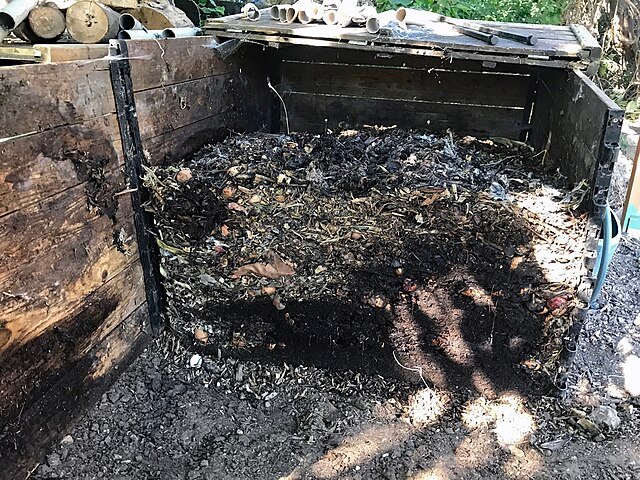
-
SPENT COFFEE GROUNDS
Used coffee grounds pile up fast—and most still end up in landfills, taking up space and releasing methane as they break down. But a growing number of businesses and households are now composting them instead. This shift turns waste into a powerful soil booster.
Coffee grounds are rich in nitrogen and work wonders for acid-loving plants like Rhododendrons, Azaleas, and Roses. They also benefit indoor potted plants and nightshades such as tomatoes, potatoes, capsicums, eggplants, and peppers. When added to compost or worked directly into soil, they improve structure, enhance water retention, and feed beneficial microbes.
The grounds act as a slow-release fertilizer and help balance carbon-heavy compost piles. Their gritty texture also aerates dense soils, making them ideal for clay-heavy gardens.

Another recent innovation is converting the grounds into fuel – for example, a company called Bio-Bean is currently collecting grounds to manufacture firelogs which are carbon-neutral energy sources for heating or cooking.

-
SINGLE-USE COFFEE PODS
Over the past decade, single-use coffee pods surged in popularity. Their convenience, wide range of flavors, and sleek design made them a staple in homes and offices. Celebrity endorsements and polished advertising campaigns helped elevate their appeal. For many, the pods and machines became status symbols—displayed proudly in public lounges and employee-only spaces.

Single-use coffee pods carry serious environmental consequences. Most pods combine plastic, aluminum, and organic coffee grounds, making them nearly impossible to recycle through standard systems. The mixed materials require costly separation processes that few facilities can manage. As a result, billions of pods end up in landfills each year.
Some companies now offer compostable pods, which break down under industrial conditions. But these remain a small fraction of the market. The vast majority of pods will sit in landfills for decades, slowly releasing nano plastics into soil and water. These particles pose long-term risks to ecosystems and human health.

Coffee pods may have revolutionized convenience, but they’ve created a fragmented and wasteful system. Most pods are brand-specific, meaning one company’s capsules won’t work in another’s machine. This lack of standardization makes recycling a logistical nightmare. Mixed materials—plastic, aluminum, and organic coffee grounds—require specialized separation, which few facilities can afford to implement.
Without a unified design, industry-wide waste reduction becomes nearly impossible. Billions of pods end up in landfills each year, where they take centuries to break down and release microplastics into the environment. Even brands with recycling programs struggle to reach meaningful participation rates.
-
SINGLE-USE PAPER CUPS
Single-use paper coffee cups are not what they seem. Most contain plastic—either blended into the paper or layered as a waterproof lining. This design makes recycling nearly impossible in standard facilities. Like single-serve pods, these cups rarely get processed properly.
Over 99.8% of paper coffee cups end up in landfills, where they slowly break down and release microplastics into the environment. These particles persist for generations, contaminating soil and water. Despite their paper appearance, disposable coffee cups contribute heavily to plastic pollution and waste. Sustainable alternatives and reusable options offer a cleaner path forward.

Increasingly, people are being nudged to carry reusable coffee cups – often they receive discounts or initial free coffees for using the reusable cups. Organizations like the rainforest Alliance also certify recyclable or compostable single use cups. However each year around 120 BILLION single use paper cups are used for coffee consumption around the world. I will leave this at that.
‼️OTHER CONCERNS
-
LABOUR
Labor shortages are hitting Costa Rica’s coffee sector hard in 2025. Isolated farms and under-populated regions struggle to find workers willing to endure long hours under harsh conditions for modest pay. Many Costa Ricans have migrated to the U.S., sending remittances home instead of working the fields. This shift leaves a gap that seasonal migrants—especially from Nicaragua—have traditionally filled.
But this year, Nicaragua’s government imposed strict travel restrictions. New laws penalize unauthorized departures and allow border officials to block re-entry. As a result, far fewer Nicaraguan workers crossed into Costa Rica for the harvest. Some farms report that up to 15% of their coffee crop remains unpicked.
Growers now scramble to recruit labor from Panama or launch local campaigns to attract Costa Rican youth. Yet the timing and skill required for coffee picking make it hard to replace experienced hands. Unharvested cherries shrivel or fall, losing value and threatening the livelihoods of small producers.
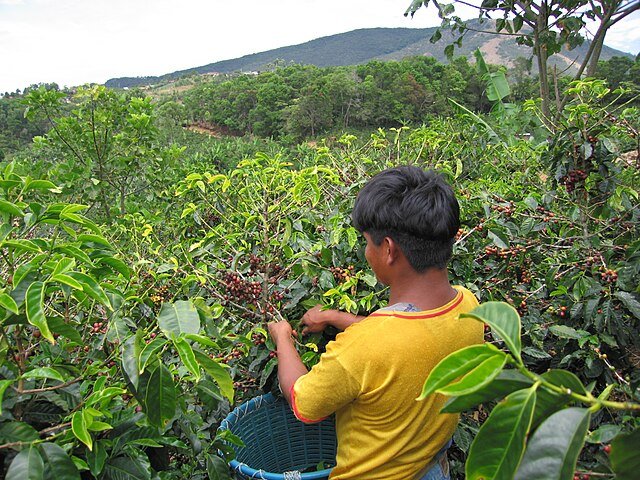
This developing crisis is causing labor rates to rise, which is beginning to threaten the profitability and sustainability of many coffee farmers. The offered wages for coffee plantation work are now sometimes twice as high as the government mandated rates.
-
CHILD LABOUR
Children often worked on family farms or large estates – this was a norm not only in Costa Rica, but all over the world. As time went on, formal education was encouraged and anti child-labor laws were enacted. And child labor has fallen dramatically, however it has not fallen to zero – children are still found to be working out in the fields, and the government is, thankfully, taking a serious approach to mitigating this issue.
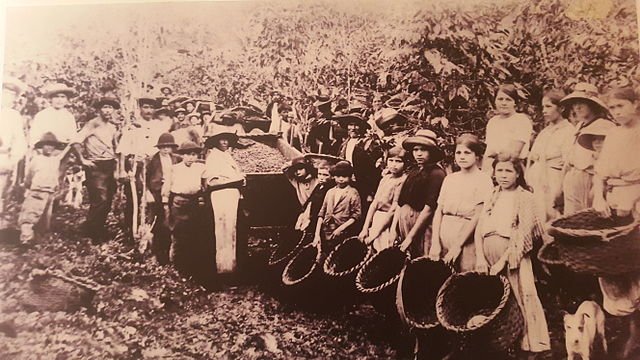
-
EXCHANGE RATE
Costa Rican coffee farmers are feeling the squeeze. Two years ago, one U.S. dollar fetched nearly 700 colones. Today, it brings in only 500. That shift means farmers earn about 30% less for the same coffee sold abroad. Most export contracts are priced in dollars, so the stronger colón slashes local revenue.
This currency imbalance hits hard. Investment in farms is slowing. Innovation and expansion are stalling. Growers face rising costs but shrinking margins. Many growers now struggle to break even.
The impact reaches beyond coffee. A strong colón hurts most export sectors and weakens tourism earnings. Meanwhile, imports—including foreign coffee—become cheaper, adding pressure to local producers.
Costa Rica’s premium arabica beans still command respect globally. But without financial breathing room, even the best growers may fall behind.

Coffee prices have surged, offering some relief to growers. But the rising value of the Costa Rican colón has slashed export earnings by nearly 20% since 2022. Most contracts are priced in U.S. dollars, so the stronger local currency cuts deeply into profits. Labor shortages and high input costs add more pressure. Growers should be celebrating record prices, yet many find themselves frustrated by shrinking margins and rising debt. The numbers look good on paper—but reality tells a different story.
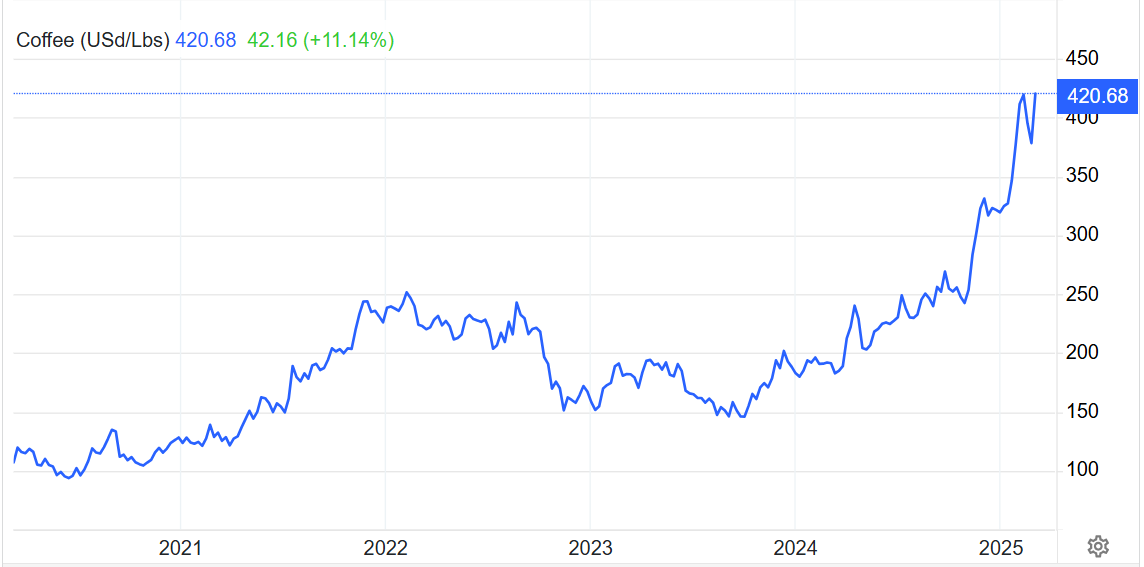
-
CLIMATE
osta Rica’s climate keeps shifting in ways that challenge tradition. Temperature and rainfall patterns now mix with human-driven changes, creating unpredictable growing conditions. December 2024 brought heavy rains that knocked ripe coffee cherries from branches and ruined harvests. Across the country, growers report longer droughts and erratic rainfall.
But farmers are adapting. Many now plant fruit trees between coffee rows. These trees offer shade, reduce evaporation, and drop leaves that feed the soil. Others switch to drip irrigation to save water and improve efficiency. These strategies help stabilize yields and build resilience against future climate shocks.
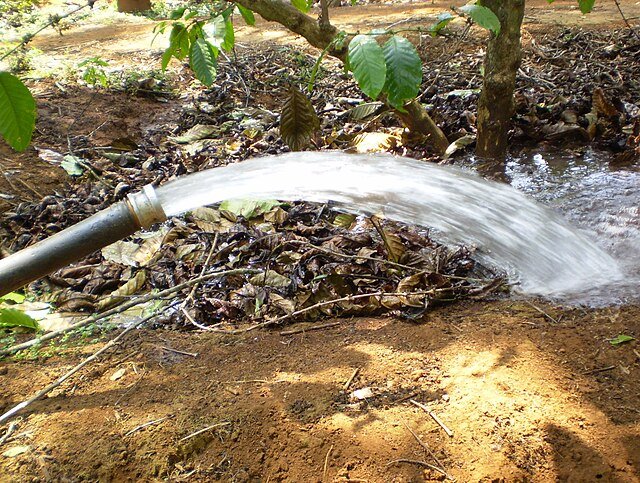
🍵 UPS AND DOWN, BUT OUR COFFEE INDISTRY IS HERE TO STAY
Coffee, like any primary industry, rides the waves of shifting demand, rising labor costs, and unpredictable weather. Yet the world’s appetite for it only grows stronger. Costa Rica, with its volcanic soil and high-altitude farms, continues to produce beans of exceptional quality. Farmers tend their crops in misty mountain air, coaxing flavor from every cherry. Roasters craft each batch with precision and pride. Locals sip it with reverence; tourists carry it home like treasure. Despite the challenges, the fields endure—and the aroma of possibility still hangs in the air.
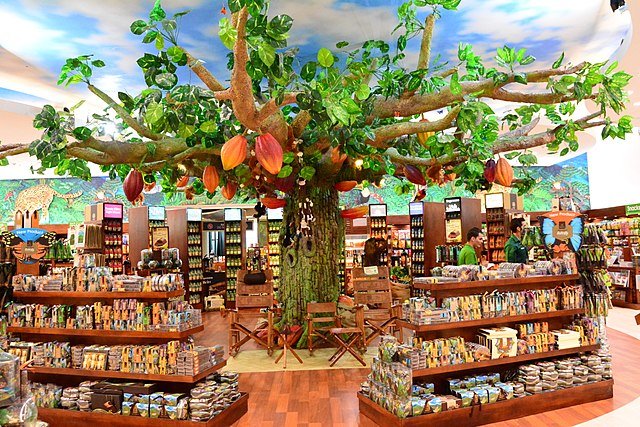
👩🏼🌾 DO YOU FANCY BECOMING A COFFEE FARMER?
RE/MAX We Sell Paradise is currently listing a number of coffee farms for sale –
- 26-acre coffee & fruit farm located near San Isidro
- 14-acre coffee & fruit farm located bear Uvita
- 41-acre coffee farm located between San Isidro & Buenos Aires
These farms are located in the highlands and mountains straddling the central spine – the views are breathtaking and the coffee beans are world-class. With the global thirst for a morning coffee growing year-on-year, these are potentially gold-mine types of investments!
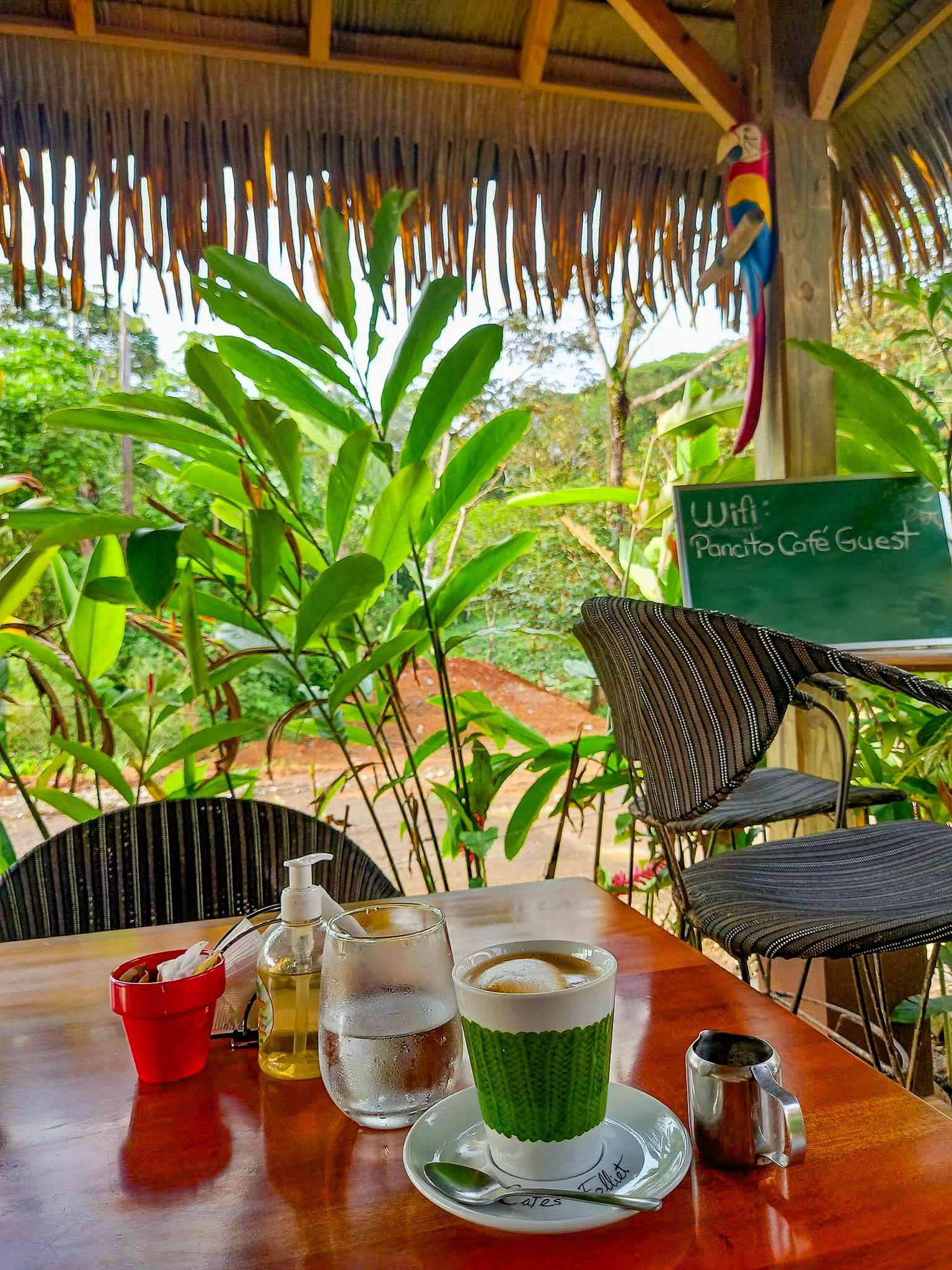
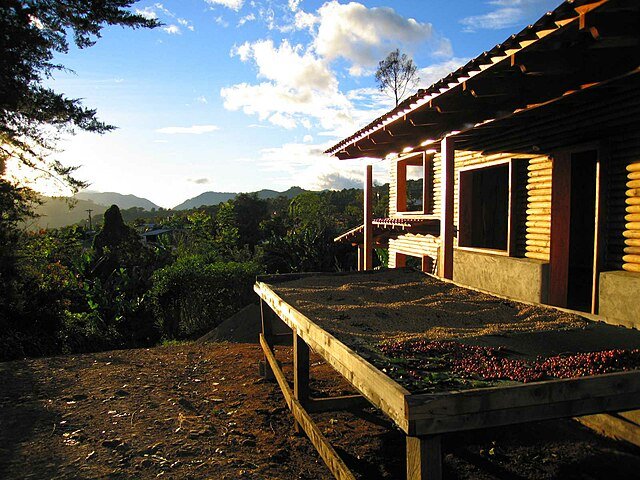
We have the BEST coffee in the world – and amazing coffee plantations are scattered all over central Costa Rica – many of which offer tours and tastings. The country truly is a coffee lover’s paradise! Imagine living in a beautiful, tropical land where each day brings an explosion of new tastes and wonder – you can make this dream a reality much quicker than you think! Take the first step by browsing our local property listings here. RE/MAX WE SELL PARADISE is your trusted partner in this land of exotic and tropical culinary delights – we are waiting for your call!
COVER: Mural “Allegory of Coffee and Bananas” (1897), by the Italian Aleardo Villa (1865-1906), painted in the National Theater of Costa Rica. c/o Aleardo Villa, wikicommons.



